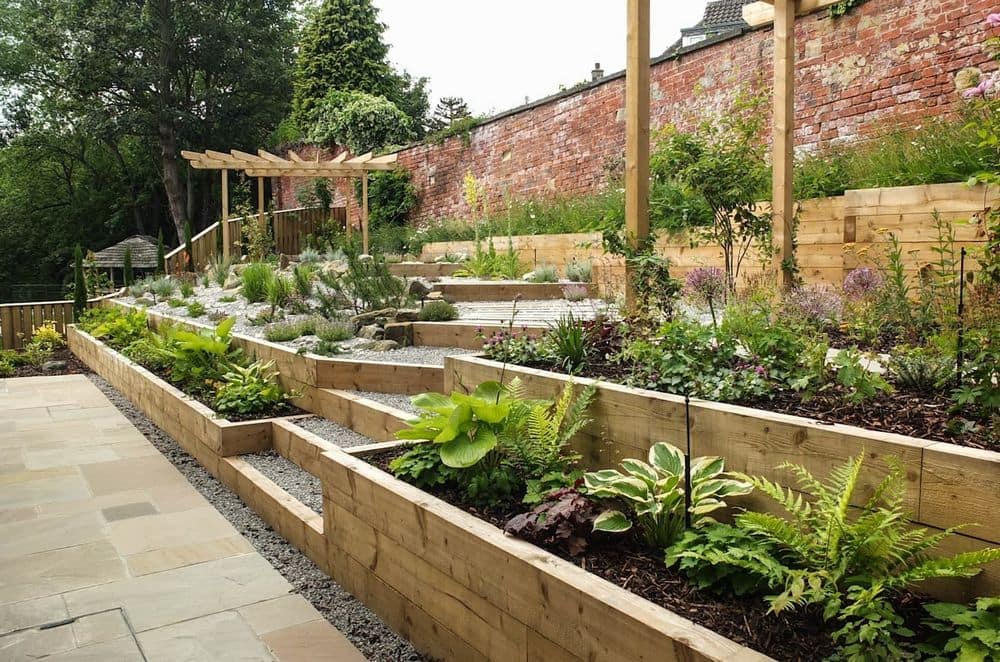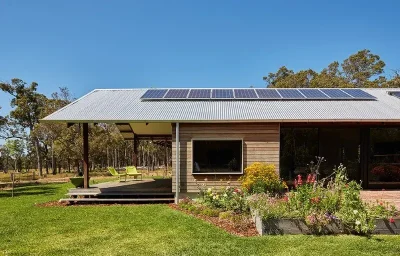
In contemporary home design, homeowners are constantly looking for ways to enhance both the functionality and aesthetics of their outdoor spaces. One of the most effective methods to achieve this is by incorporating retaining walls. These structures, often overlooked, can transform your yard into an outdoor haven, providing both aesthetic allure and practical utility.
The Dual Role of Retaining Walls
At first glance, a retaining wall might seem like a purely functional feature, designed primarily to hold soil in place. However, when used creatively, it can serve as a central element in landscaping design. Here’s how:
Leveling Sloping Yards: Many homes, especially those built on natural terrains or in hilly areas, come with sloping yards. While a slope can offer a unique look, it can limit the usable space in the garden. A retaining wall offers a solution by leveling out areas, providing flat surfaces for leisure or gardening.
Terraced Gardens: For those looking to add a touch of sophistication to their outdoor space, terraced gardens are a fantastic choice. Using retaining walls, you can create multiple levels in your garden, each potentially serving a different purpose. The top tier could be a vegetable garden, the middle a flower bed, and the bottom a seating area, offering a panoramic view of the entire space.
Choosing the Right Material
The choice of material for your retaining wall can drastically affect its appearance and lifespan. Let’s explore a couple of popular options:
Wooden Timbers: Offering a rustic appeal, wooden timbers blend seamlessly into natural landscapes. They’re relatively easy to work with, making them a popular choice for DIY enthusiasts. However, they do require maintenance to prevent rotting and decay.
Concrete Blocks: If longevity and durability are your primary concerns, concrete blocks might be the right choice. These blocks can be molded to mimic natural stones, offering an elegant look without the hefty price tag of natural stone walls. Plus, they stand strong against weathering and erosion. They’re also held together by concrete sleepers.
Incorporating Aesthetic Enhancements with Retaining Walls
Beyond the primary functionality of retaining walls, there’s ample room for artistic expression. These walls provide a canvas for homeowners to add distinct touches that reflect their personal style.
- Planters and Greenery: Infusing life into your retaining wall can be as simple as adding planters or creating pockets within the wall for greenery. Cascading plants, like ivy or creeping thyme, can soften the look of stone or concrete, creating a beautiful blend of hardscape and landscape.
- Integrated Seating: Why add garden furniture when your retaining wall can serve a dual purpose? With a little planning, you can incorporate built-in seating into the design, creating a cozy nook to enjoy your garden views.
- Lighting Accents: Enhance the beauty of your outdoor space even after the sun sets. Embedding soft LED lights in your retaining wall not only ensures safety but also adds ambiance. Illuminate steps, highlight planters, or simply create a warm glow for evening gatherings.
- Water Features: Imagine the soothing sound of water cascading down your retaining wall. Incorporating water features, whether they’re simple fountains or elaborate waterfalls, can make your garden feel like a serene sanctuary.

Sustainability and Retaining Walls
In today’s eco-conscious world, the environmental impact of our choices is paramount. Retaining walls can contribute to a more sustainable garden in several ways:
- Soil Conservation: By preventing soil erosion, retaining walls conserve the topsoil, which is vital for plant growth and maintaining a balanced ecosystem in your garden.
- Rainwater Harvesting: Design your retaining wall to guide rainwater to storage points. This harvested rainwater can later be used for watering plants, thereby conserving water.
- Heat Regulation: Especially in urban areas, concrete and stone retaining walls can help regulate temperature, absorbing heat during the day and releasing it at night. This natural temperature control can create a more pleasant outdoor environment and even help reduce energy costs.
Exploring Advanced Retaining Wall Techniques and Styles
As homeowners become more experimental and adventurous with their outdoor spaces, retaining wall design has evolved to include a plethora of advanced techniques and diverse styles. These innovations cater to a wide range of tastes, ensuring that every outdoor space can be a unique reflection of individual preferences.
- Modular Wall Systems: For those seeking a streamlined process, modular wall systems are becoming increasingly popular. These pre-designed sections are easy to install and can be customized to fit various lengths and heights, offering both aesthetic value and structural integrity.
- Natural Stone Veneers: While concrete blocks are durable and cost-effective, some homeowners desire the authentic touch of natural stone. Stone veneers can be attached to more basic retaining wall structures, providing the appearance of a full stone wall without the associated cost and installation challenges.
- Artistic Murals and Mosaics: For the artistically inclined, retaining walls can be transformed into stunning murals or mosaics. Using tiles, colored stones, or even painted designs, these walls can become standout features, turning a simple garden into an outdoor art gallery.
- Mixed Material Combinations: Combining different materials, like wood and stone or metal and concrete, can lead to striking visual contrasts. This approach can segment different areas of the garden or simply add an eclectic charm to the outdoor space.
The Role of Technology in Retaining Wall Design
With the advent of modern technology, designing and implementing retaining walls has never been more precise and creative:
- 3D Modeling: Before breaking ground, homeowners can now visualize their finished walls using 3D modeling software. This tool allows for adjustments in design, ensuring the final product aligns with the homeowner’s vision.
- Drone Surveys: Drones equipped with cameras can provide aerial views of the landscape, helping in accurate measurements and identifying the best placement for the wall based on the natural contours of the land.
- Smart Drainage Systems: Modern retaining walls can integrate smart drainage solutions that detect moisture levels and direct excess water away from the structure, ensuring longevity and reducing maintenance needs.
Conclusion
Retaining walls, with their dual nature, can amplify the beauty and functionality of any outdoor space. Whether you’re looking to reclaim a sloping yard or dreaming of a multi-tiered garden oasis, these structures can be your ticket to an outdoor transformation. As you embark on this landscaping journey, remember to choose materials that resonate with your vision and the surrounding environment.








